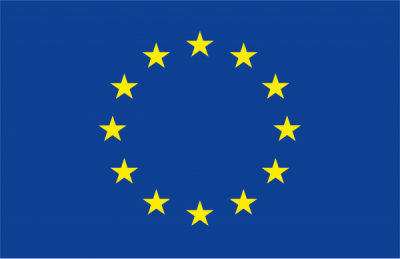
Strovolos Urban walk by CARE-C PhD students in the context of the CliCCHE project
In the context of the Erasmus+ Climate Change, Cities, Communities, and Equity in Health (CliCCHE) project framework, CARE-C PhD students of the Cyprus Institute took part in a series of workshops titled “Urban Health”.
One of the ‘Urban Health’ activities was the Urban walk. This workshop aimed to increase the knowledge about a sensitive area of the city at two different levels: from above, through the help of maps, websites, and datasets, and from within, by visiting it and carrying out local measurements and inquiries. The area selected for this purpose was the historical center of Strovolos in Nicosia, around the area of Chryseleousa church.
After acquiring more information about the area through online databases and obtaining a more accurate “view from above”, on March 22nd, 2023, the first urban walk took place. The group of students and their trainer performed a short circular walking route. During the walk, the students used instruments to collect temperature data, thermal images, and videos. Quantitative data, such as the number of vehicles passing through a specific location or the number of pedestrians met over a certain amount of time, were gathered in fieldnotes along with interviews with residents and local citizens.
To better describe the temperature trends, a second walk was organized on the 16th of May, 2023 during a heatwave. This time, the only focus was collecting temperature data. The walk’s route was slightly different from the previous one, but still in the same area around the Chryseleousa church.
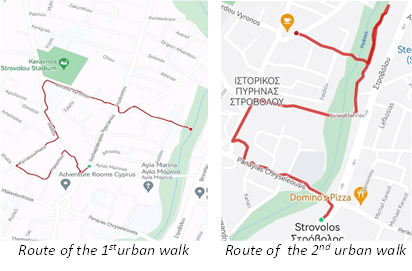
The results demonstrated how the temperature increases substantially when measured outside the linear park, compared to inside the park, where trees have a mitigation effect, reducing the temperature.

Following the findings of the walk, simulations were conducted (using the ENVI-met micro-climate simulation software.) based on an area which was part of the walk, where there were no number of trees and it was estimated how the air temperature would vary if trees existed in the same area.
The simulations were run using data from the 4th of August 2021 at 2:00 pm, representing the day with the highest temperature recorded by the Department of Meteorology (DoM) during the 2021 heatwave. The variables investigated were the 2-meters air temperature and the Universal Thermal Climate Index (UTCI), which measures the human physiological response to the thermal environment.
For these reasons, and because it is very well-known and proved in the literature that extreme heat affects particularly older adults, the UTCI was analysed for an older adult (80 years old), male, in summer clothes.
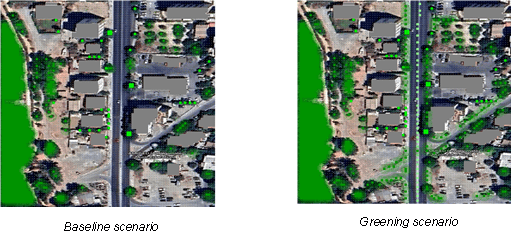
As expected, results revealed that trees help reduce the air temperature of the surrounding area. For instance, the real temperature of the area was equal to or greater than 39.15°C. On the other hand, in the greening scenario the predicted temperature was between 37.40 °C and 38.45 °C. In general, it is quite evident the beneficial effect of trees all over the area of study.
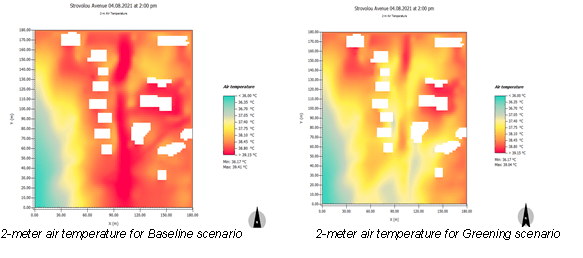
Finally, similar to the 2-meter air temperature simulations, a significant reduction in the UTCI equivalent temperature was observed as, by increasing the number of trees along the streets, the cooling effect was greater.
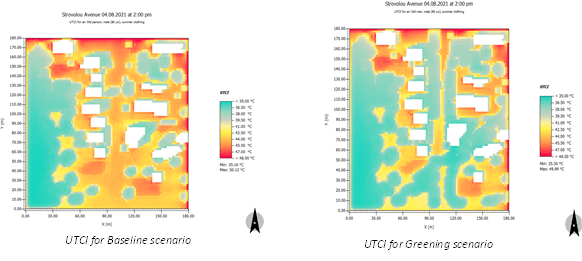
The last part of the work developed for the workshop aimed at trying to find a way to communicate these results in a way that was easily understood by the general public. For this reason, starting from the picture of Strovolou Avenue as it is, two more photoshopped images were created to represent graphically what a greening scenario would look like.

Overall, the whole Urban Health workshop experience was very fruitful in many aspects. It helped build stronger bonds between the students who participated, namely Giandomenico Vurro, Anna Tzyrkalli, Konstantina Koutroumanou-Kontosi, Niki Paisi, and Pantelis Kyriakidis. Furthermore, it has improved their knowledge and provided an opportunity to be exposed to issues on raising awareness regarding climate change. Special thanks to the organisers of the project, Dr Ioanna Kyprianou and Prof. Salvatore Carlucci.
The ENVI-met simulations and the photoshop images are part of Giandomenico Vurro’s PhD project, and were developed in collaboration between the Energy, Environment, and Water Research Center (EEWRC) and the Climate and Atmosphere Research Center (CARE -C).


